Last Updated: February 14th, 2020
I came across Sent Into Space mostly by chance while dabbling in my routine ritual of checking out posts on Reddit. There was a photo taken from space featuring the Grand Canyon, and it really grabbed my attention. It’s simple beginnings really, but as I began to explore more posts and found out they were associated with an actually legitimate space research organization, I couldn’t help but get in touch.
I’ve always found all things “space” to be interesting, from looking at the moon in the backyard, to staring at the starry sky just last year in Death Valley National Park, watching movies with space as the theme, and listening to trippy space rock music.
Want a quick introduction? This video is a great way to get a sense of what Sent Into Space is all about:
[penci_video url=”https://www.youtube.com/watch?v=ZzgJCwPdnwc” align=”center” width=”” /]
In this interview, I got to chat with Alex Keen, Head of Communications for Sent Into Space. He goes into detail about how the organization got started, and talks in great detail about what it takes to capture photographs and video of space.
Please share with us how Sent into Space was started?
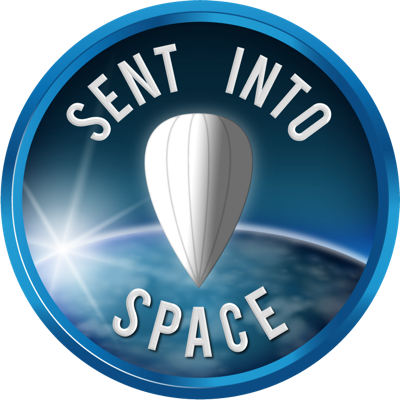
Back in 2010, Alex Baker and Chris Rose were studying for their PhDs in Mechanical Engineering at the University of Sheffield. They became interested in lighter-than-air balloons after seeing video footage of flights conducted in the 1960s by US Air Force pilots in the early days of the space race. Chris and Alex decided to conduct their own launch using a weather balloon, sending up a camera to film the flight. The video of their journey and the images taken went viral and hundreds of enquiries began to pour in from schools wanting them to talk to their pupils, research organisations looking for easy access to the Near Space environment and companies seeking to raise their profile with attention-grabbing PR stunts.
Sent Into Space was created in July 2011 and began conducting launches later that year.
8 years later we’ve conducted over 400 launches from sites across the globe.
As this might be the first time a reader in my audience is coming across Sent Into Space, what are the biggest goals of your organization?
We aim to be the experts in Near Space exploration and marketing.
Amateur hobbyists have been conducting their own flights using weather balloons for decades, but we were the first organization to bring a professional service to market and we continue to lead the field. Not only have we conducted more flights than any other provider, but the technology we’ve developed gives us capabilities unavailable through other companies, including live HD video streaming from the edge of space. We’re also the only company in the world with full Public Liability Insurance for Near Space flight.
What are some of the more interesting projects SIS has had the opportunity to work on?
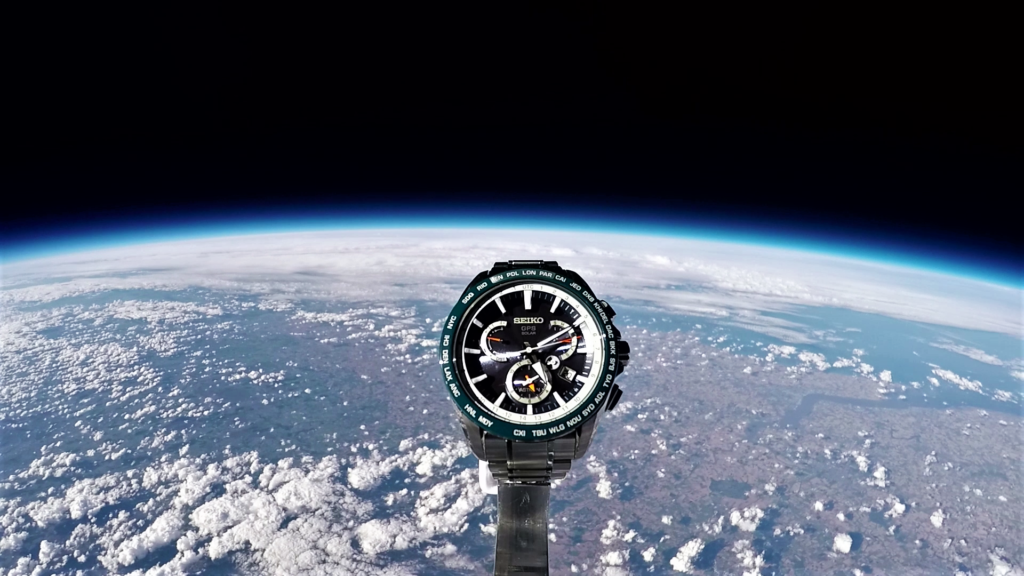 Every project is fun, but the most exciting are things like scavenger hunts.
Every project is fun, but the most exciting are things like scavenger hunts.
A few years ago we launched a Seiko Astron for UK watch retailer Jura Watches on the site of their new headquarters. We tracked the flight and then cut the public feed of its location once it was about 15km off the ground so that members of the public could hunt it down, with the winner getting to keep the watch. Of course, we knew where the payload was throughout. It was very entertaining seeing the wildly inaccurate ‘calculations’ people were sharing on social media in the weeks before the watch was finally found.
My first exposure to Sent into Space came in the form of a Reddit post where a shot of the Grand Canyon was shown. It’s an amazing capture because so often we can get tied down to viewing the world around us in a very one-dimensional way. Having visited the Grand Canyon before, it’s mesmerizing to look out over it. Seeing a shot of it from space puts an entirely new perspective out there. How do you find images like this impact you and anyone who happens to view them?
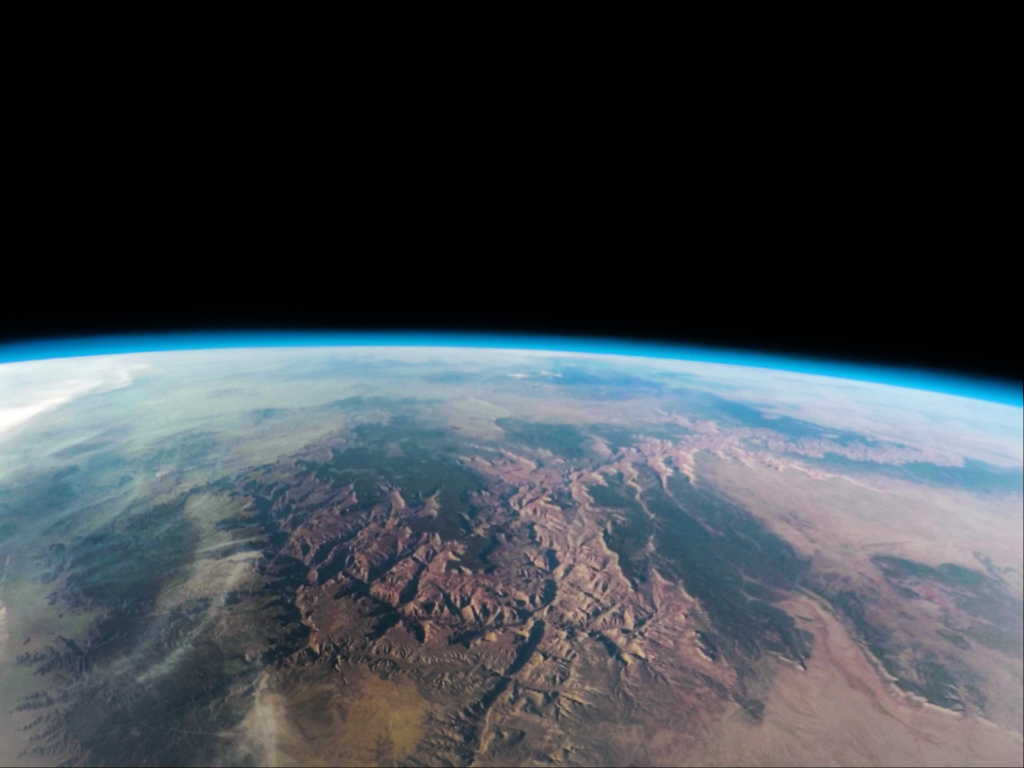 After doing this for nearly a decade, we’ve seen a lot of cool space images, but the impact never really goes away.
After doing this for nearly a decade, we’ve seen a lot of cool space images, but the impact never really goes away.
As someone said on our latest Reddit post, seeing the atmosphere reduced to a thin blue glow on the horizon is a reminder of how small and fragile our little bubble of safety is. Space is also the ‘final frontier’ of human exploration and ingenuity.
Who as a child didn’t dream of being an astronaut at one point? In that sense, our images are inspiring as well.
We offer a program to schools called Classtronauts where we conduct a launch from the school and we’ve had lots of positive feedback from teachers and pupils who say it really encourages uptake of STEM subjects in later years.
Can you walk us through what the launch process looks like?
On arrival at the launch site, we stake out a tarpaulin and if we have a viewing audience, we mark out an exclusion zone for safety. Depending on the purpose of the launch, we may have any number of payload elements to manage, but a few key elements are the same no matter what.
We fill the space-capable balloon, using a ballast weight to measure when we have the appropriate amount of lifting gas in the balloon canopy. Below that a length of paracord leads to a parachute, below which hangs a lightweight payload containing our dual tracking systems, which are thoroughly tested before launch. We run a few predictions, set our cameras running and let it go.
The whole launch process takes about an hour – I think our fastest time is maybe 20 minutes, but we prefer to be methodical.
[penci_video url=”https://www.youtube.com/watch?v=oOy83hmS4Zs” align=”center” width=”” /]
How many people are involved in the launch? What roles do they have in making sure everything goes smoothly?
Most of the work that goes into a launch actually happens before we ever leave the office.
Our balloons don’t have a powered steering system, so the flight path on any given day is set by wind conditions throughout the various layers of the atmosphere.
A launch starts with our Operations Manager Dan monitoring conditions, securing legal permission from the relevant regulatory body and scheduling the launch. Thanks to him, we can predict the flight path to within a few hundred metres and revise our plans accordingly.
Next, our Lead Design Engineer Jack heads up the construction of a payload according to the requirements of the project. Sometimes that means building a custom frame to carry a piece of equipment we’re testing or a mounting system for a company’s product, and the entire design has to take into account production and transfer of heat throughout the flight to make sure any electronics remain within their operating range.
We usually launch with a team of two who conduct the filling process and launch, then track the payload across the country and recover it where it lands.
Everyone in the company is trained at launch and recovery so we can conduct multiple flights on a single day if needs be, but at least one of the spots on the launch team is usually filled by our Launch Manager Rich.
Can you share any information about the camera(s) and other equipment used to capture the images and video from space?
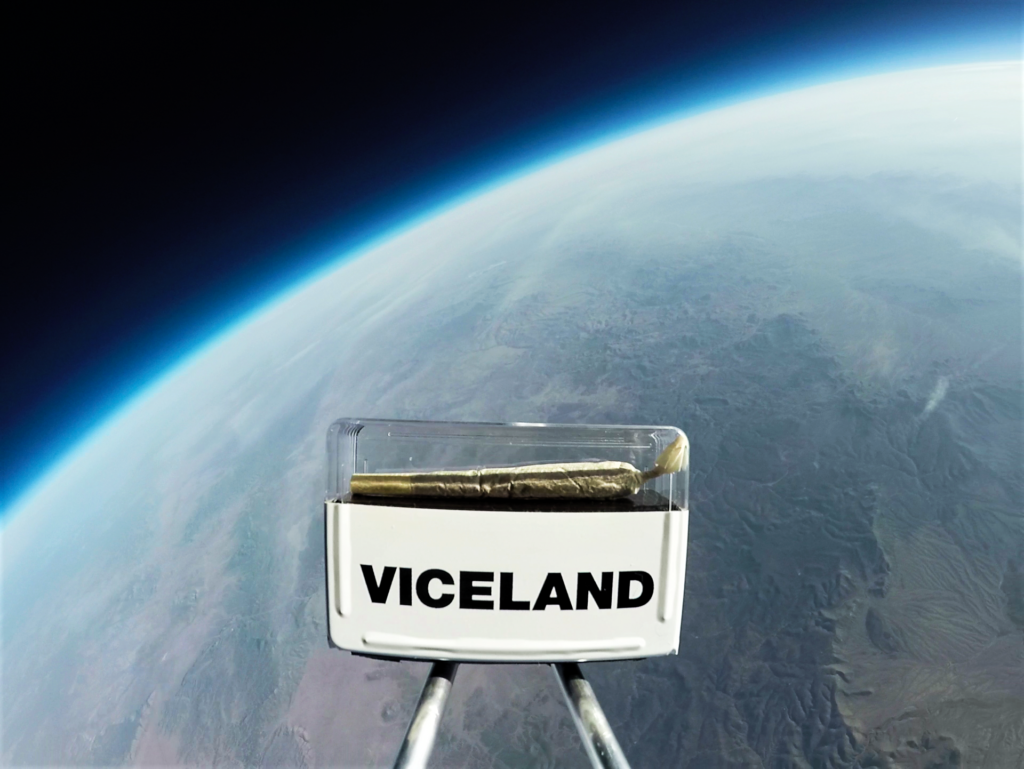 The main thing that kills cameras on our flights is temperature, both hot and cold. At early stages of the ascent, the pressure drop means heat is drawn away from the batteries and they just can’t supply power quickly enough. Higher up though, the lack of atmosphere means there’s no convection dispersing heat, so cameras can actually overheat when the ambient temperature is as low as -60°C! Any camera we use needs a wide operating temperature range to survive the whole flight.
The main thing that kills cameras on our flights is temperature, both hot and cold. At early stages of the ascent, the pressure drop means heat is drawn away from the batteries and they just can’t supply power quickly enough. Higher up though, the lack of atmosphere means there’s no convection dispersing heat, so cameras can actually overheat when the ambient temperature is as low as -60°C! Any camera we use needs a wide operating temperature range to survive the whole flight.
In the early days we relied heavily on GoPros – action cameras are great for Near Space flight and are popular in the hobbyist community. Over the years advances in payload design coupled with extensive modifications have allowed us to use all sorts of cameras, including 360° cameras.
Is the camera operator able to remotely control camera settings (such as ISO, aperture, etc)?
We do have the technology for remote adjustments, but transmitting back the camera image is hugely complex and because the subject of the photos is usually fixed in place it’s not really necessary to change things during the flight. Years of experimentation have left us with a solid understanding of the optimal settings for each flight.
Do you have options for using different focal length lenses while in space, or are you limited to just one?
It depends on the project, but we prefer to use a wide-angle prime lens locked to infinity. Lenses with a long hyperfocal distance are required to keep the ‘feature items’ and the background in focus. We tend towards smaller apertures because without the diffusive effects of the atmosphere in play, sunlight is about 60% brighter than you’d experience on the ground. Shooting in RAW also gives us plenty of freedom to process the image after it comes back down to account for the amount of light we pick up.
How is the control of the camera equipment managed from the ground?
The radio communication system we use to track the flight can also be used to transmit commands back to the flight computer, which we can use to control various pieces of equipment including the cameras.
What are some locations you have used as a launch site?
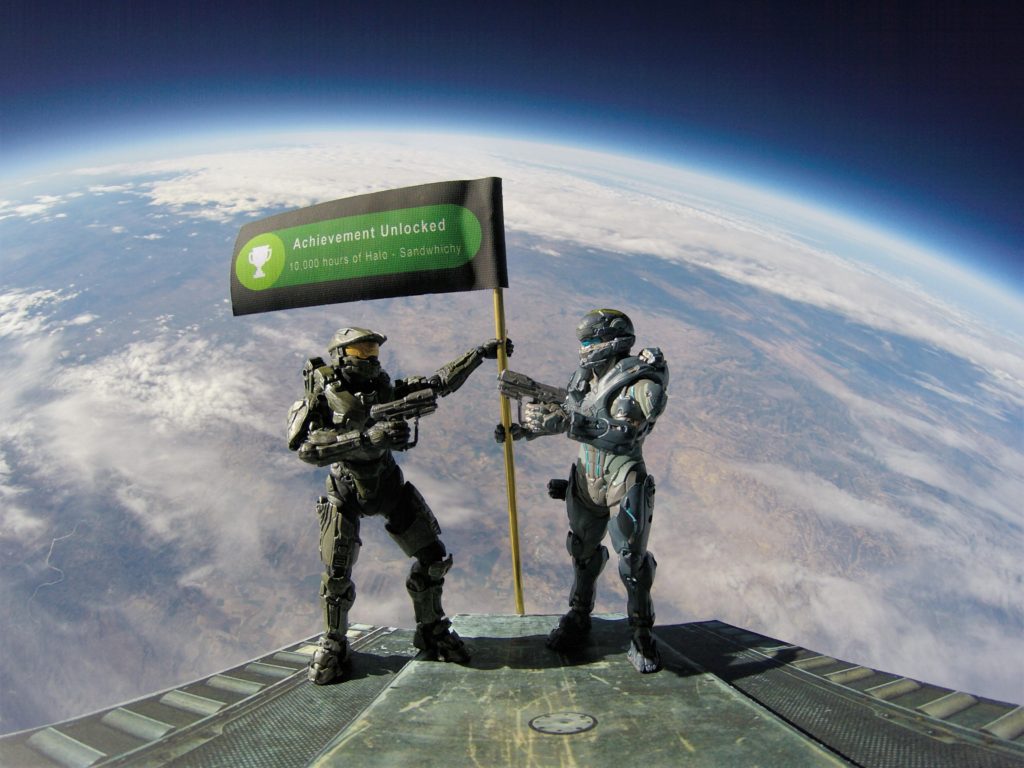 We have a few dedicated launch sites in the UK where we have a standing clearance from the Civil Aviation Authority to launch with a few days’ notice, but we can launch pretty much anywhere in the world. In the US alone we’ve launched in Nevada, Utah, Arizona, California and New York State.
We have a few dedicated launch sites in the UK where we have a standing clearance from the Civil Aviation Authority to launch with a few days’ notice, but we can launch pretty much anywhere in the world. In the US alone we’ve launched in Nevada, Utah, Arizona, California and New York State.
Do you have a team that travels around the world to conduct launches, or team members located in different countries?
Right now all our staff are based in Sheffield in the UK and when an international project comes up we decide who goes based on availability, the technical requirements of the launch and who really wants to get out of the country. It’s one of the perks of the job!
Setting up international branches is something we’d like to do in the future but we’re not taking applications just yet.
Are there any plans for some extra special launches on the horizon? Would Sent into Space ever try to send a human up there, or will that just be reserved for a future SpaceX flight?
There are plenty of technological advancements we’re working on behind the scenes.
We recently upgraded our livestreaming capabilities to allow full HD broadcast with less than a minute latency, which unlocks a lot of potential.
One thing we’d really like to do is set off a firework in space and film the explosion in 360°, but we’re waiting for the right opportunity.
There are a few companies who are investigating the viability of balloons as a mechanism for tourist flights, but from what we’ve seen it’s not likely to be on the horizon any time soon. We’ll leave that to SpaceX!
What impact do you feel incorporating imagery of the Earth from space, whether on its own in a beautiful shot or those that are less serious when you send everything from bourbon whiskey to prosthetic legs up?
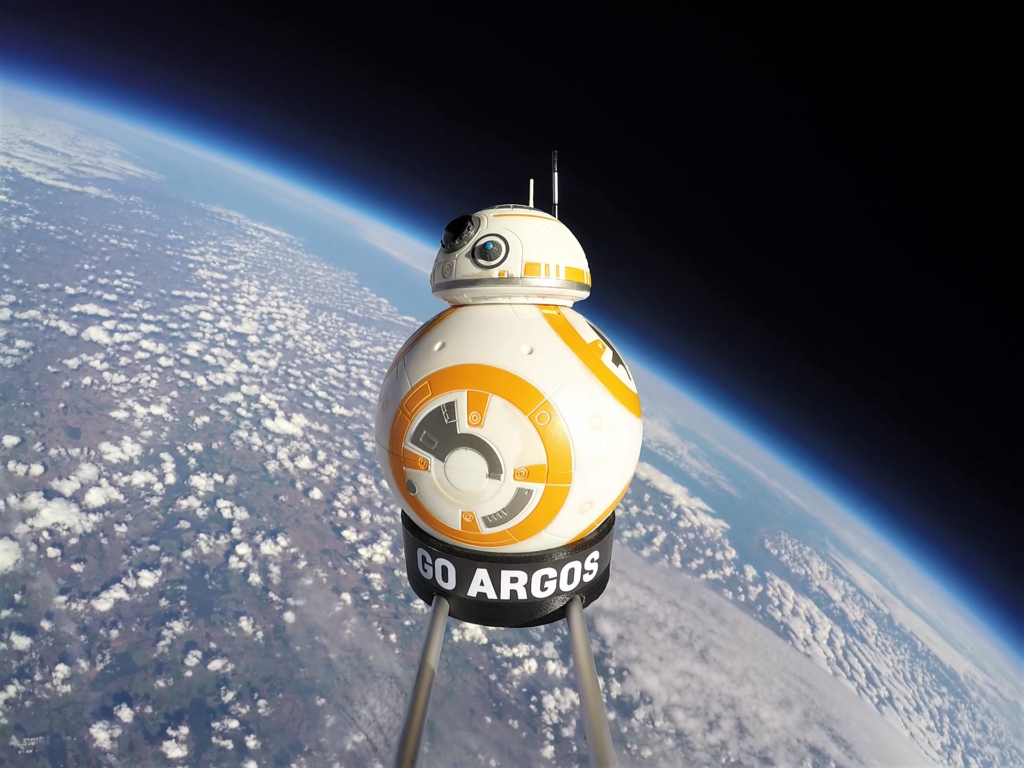 Our mission is to bring space a little closer for everyone. I think most people are aware of the rise of private space exploration companies like Blue Origin, Virgin Galactic and SpaceX, but that’s just the most public face of the current boom in private space companies.
Our mission is to bring space a little closer for everyone. I think most people are aware of the rise of private space exploration companies like Blue Origin, Virgin Galactic and SpaceX, but that’s just the most public face of the current boom in private space companies.
Alongside the marketing stunts, we’re testing components for aerospace companies and researching climate conditions in the upper atmosphere. Understanding and capitalizing on space is probably one of the most important things we can do to ensure the survival of our species in the long-term, so if our work promotes a public interest in space, possibly inspires people to pursue a career in space-related fields, that’s a huge achievement.
What are some of the images that have captured the most attention from the public?
Probably the most unexpected attention we got was when we launched a pie into space.
The World Pie Eating Championships take place every year in Wigan in the UK and the founders always do some kind of publicity stunt to promote the event. In 2016 they asked us to send a pie into space. For whatever reason, people find the idea of food in space fascinating and the video of the flight was picked up by press agencies across the world – we reckon that footage alone has over 100 million views. We still get asked about it to this day!
[penci_video url=”https://www.youtube.com/watch?v=fO0CmN4g0pM” align=”center” width=”” /]
What are a few of your favorite shots?
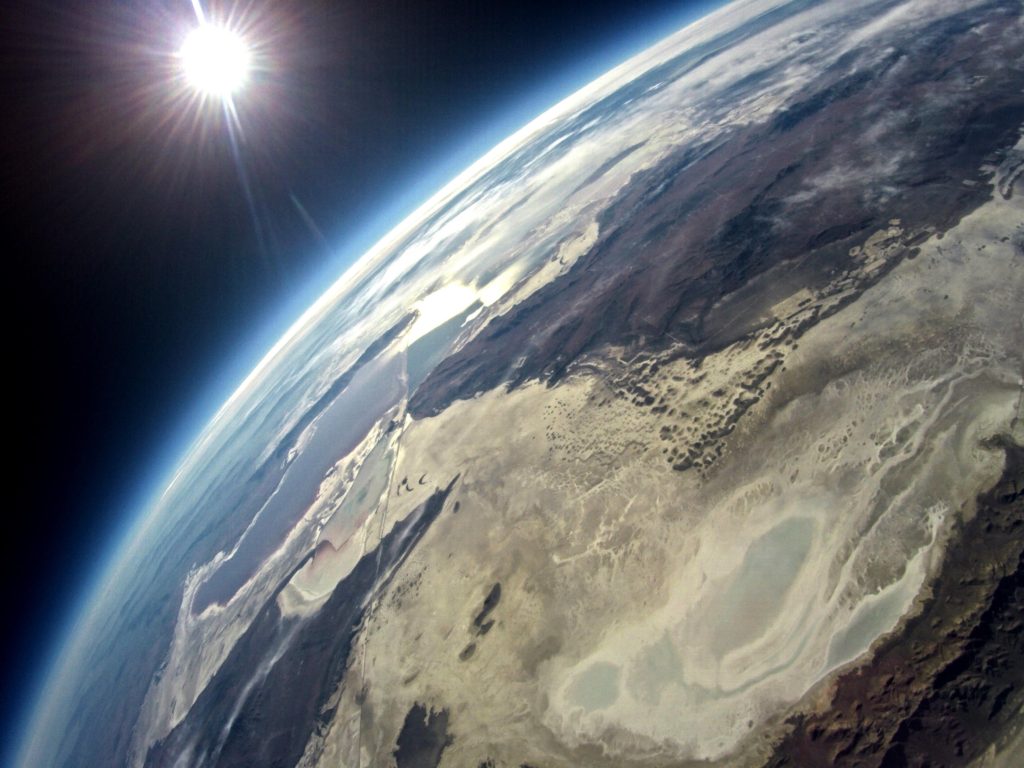 We’ve taken some stunning photos over the years.
We’ve taken some stunning photos over the years.
A few years ago we released about ten balloons on the same day as part of an educational competition and one of the flights managed to photograph another flight train in space, which is very cool. We’ve also shot some wild landscapes – our launches over the Utah Salt Flats look like they could be from an alien planet.
Probably the favourite is the one from our very first flight. The founders launched a video camera and then stitched about 250 frames of video together to make a hi-res panorama of the Earth. Not only is it a brilliant image but it’s also a reminder of how this all started.
How do you feel Sent into Space will leave a lasting impression on anyone checking your organization out now or into the future?
Hopefully people who see our work are entertained, maybe even inspired.
In 2017 we launched a new brand, Ascension Flights, which is a service for scattering ashes in space, something we’d wanted to do for a long time. I think one of our clients said it best: “your service is so much more than just a ride into space and that’s not something even I appreciated until after the event. I look up at the blue sky and clear starry nights differently since dad’s ashes were sent up there, and I hadn’t expected that.”
Anything else you’d like to add?
If you want to see more, our Instagram is @sent_into_space and our YouTube channel has all sorts of launch footage as well as behind the scenes. If you have an idea for something you’d like to launch, get in touch at www.sentintospace.com and if you’re in the UK and want to launch your very own flight, we just launched an all-inclusive kit at www.astropod.space!
I hope you enjoyed the read! 🙂
So, what do you think? Share your thoughts with us below!